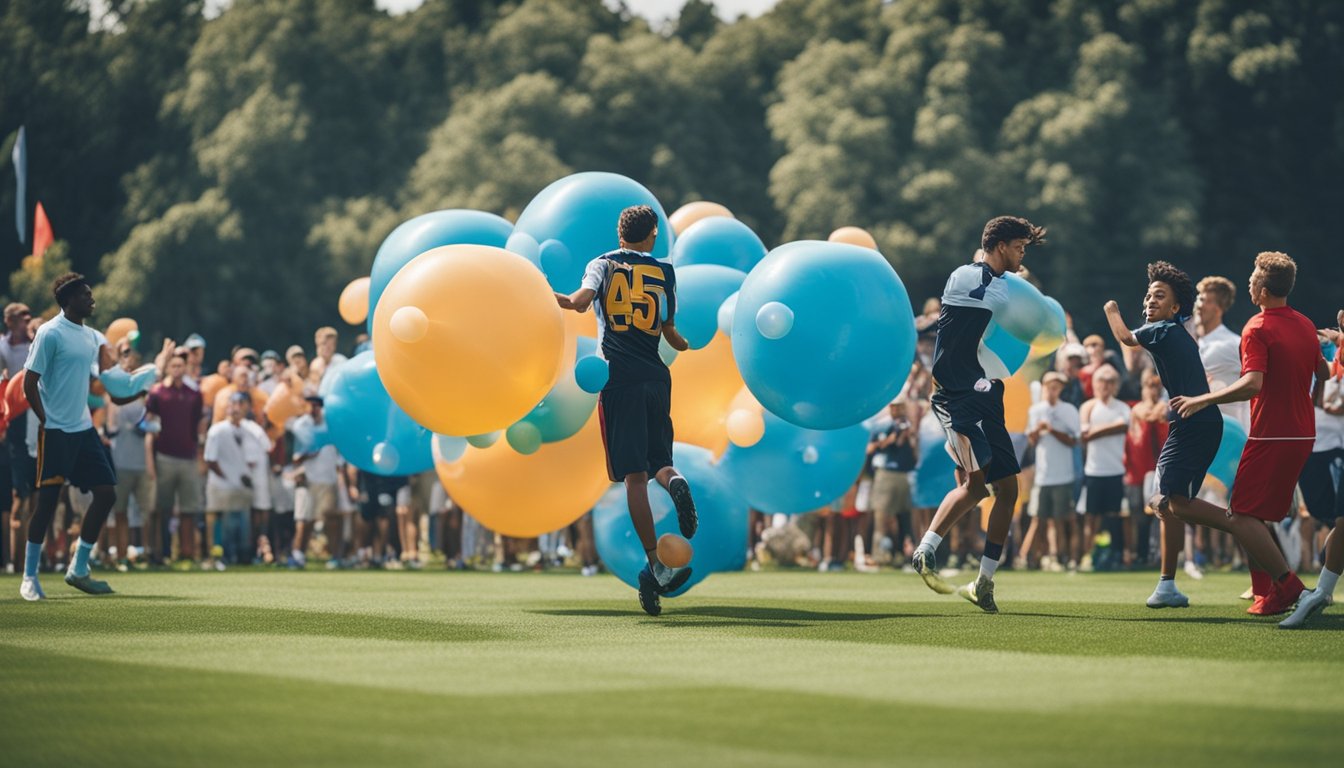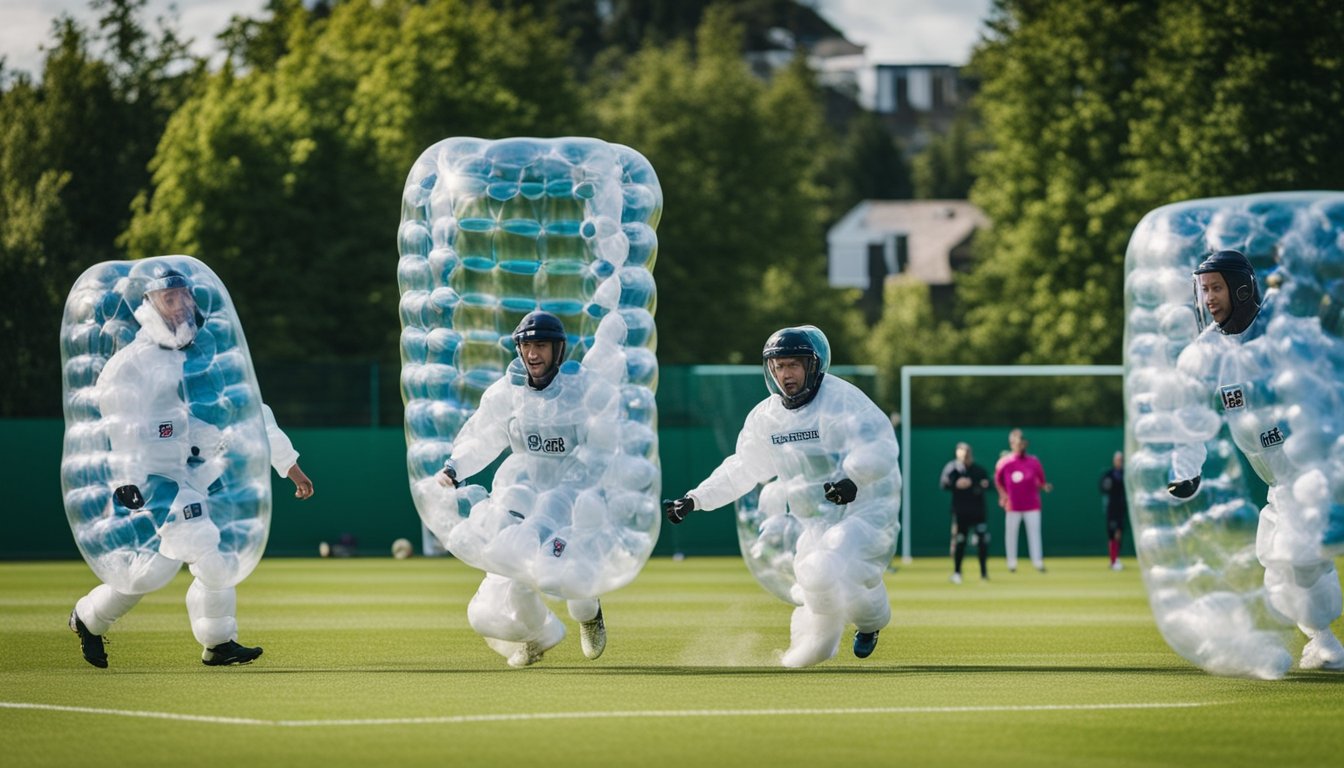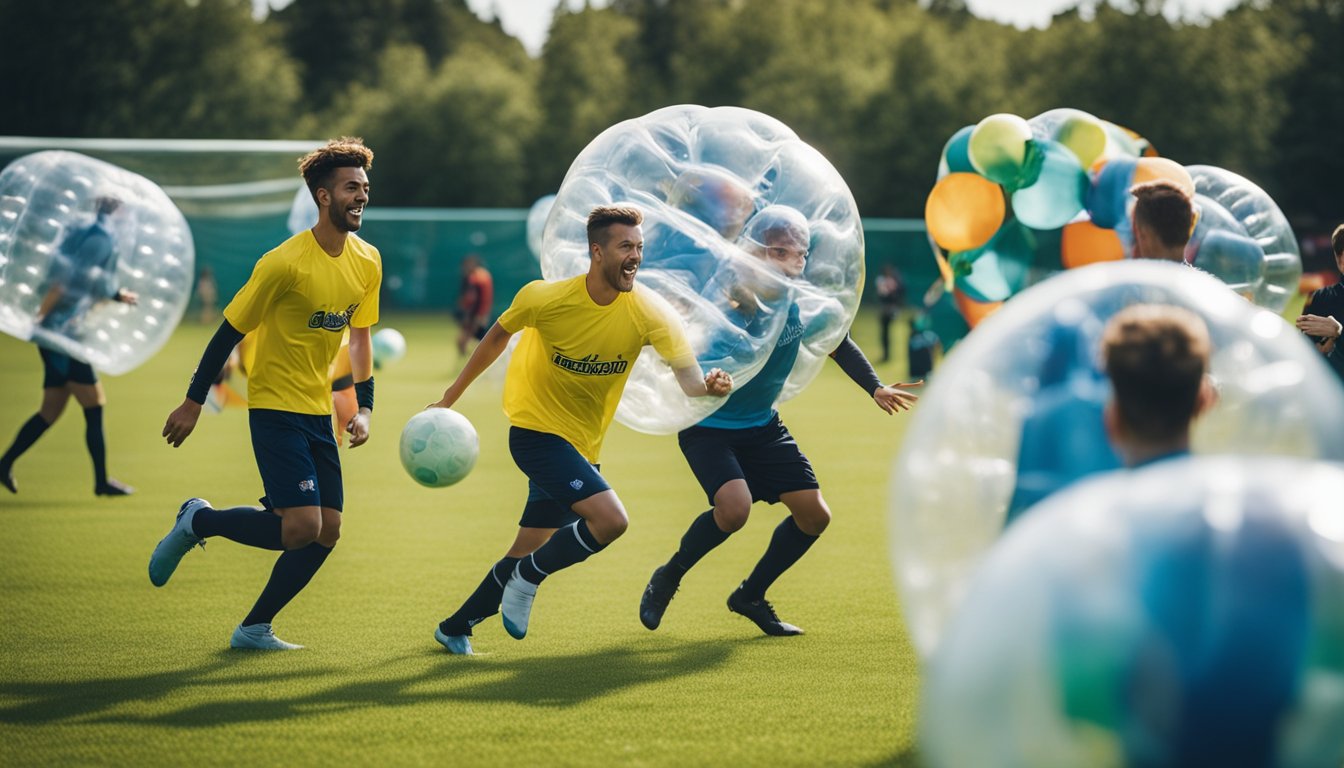Late updated: 14 Jan 2025 14:01
Written by: Emma Saunders
Bubble Football's Rise in UK Sports Culture: Transforming Recreational Activities
Bubble Football has rapidly emerged as a quirky and thrilling addition to the UK sports scene, captivating players and spectators alike with its combination of traditional football skills and zany antics. Originating in Norway in 2011, this sport took root in the UK thanks to the enthusiasm of individuals who recognised its potential for joy and athletic excitement. The game features players encased in giant inflatable bubbles, bouncing around and colliding in a spectacle that entertains all involved.

Its rise in prominence can be attributed to its unique ability to blend physical activity with sheer fun, appealing to diverse demographics across the country. Whether it's for corporate events, social gatherings, or team-building exercises, Bubble Football offers a refreshing departure from conventional sports, making it a beloved option for many who seek enjoyment and fitness in equal measure. The sport's adaptability and the shared joy it fosters resonate deeply, contributing to its growing presence in British culture.
As we delve further into the socio-cultural impact this sport has made, we explore how Bubble Football's quirky charm and accessibility have made it a staple in various community events, sparking interest and participation across the UK. Its reach extends beyond the field, influencing social interactions and bringing communities together in unexpected ways.
Key Takeaways
- Bubble Football's popularity in the UK stems from its unique blend of sports and fun.
- It has had a significant socio-cultural impact, promoting community engagement.
- The sport continues to evolve, offering widespread appeal to diverse groups.
The Birth and Evolution of Bubble Football in the UK
Bubble Football has seen an impressive rise in the UK's sports scene, offering a playful twist on traditional football. Its journey from a novel concept to a widespread activity is a testament to how sports culture can embrace innovation while maintaining ties to community and heritage.
Concept Origin and Initial Reception
The concept of Bubble Football started in Norway in 2011, introduced by Henrik Elvestad and Johan Golden on their TV show, "Golden Goal". In the UK, Lee Moseley played a significant role in bringing the sport to broader attention through self-financing initiatives. Initially seen as a quirky adjunct to conventional football, it quickly captured public interest for its blend of athleticism and amusement.
In essence, the novelty of players encased in large inflatable bubbles made the game accessible and entertaining. This visual spectacle was not only eye-catching but also provided an engaging way to play football with an element of safety and fun.
Football Culture and Bubble Football Adoption
Football as a sport holds remarkable cultural significance in the UK. Its deep roots in community life have facilitated a smooth adoption for variations like Bubble Football. We observed that local clubs started integrating Bubble Football into their events to appeal to younger audiences and create family-friendly experiences.
The union of community spirit and recreational innovation underpins the sport's rapid acceptance. Bubble Football aligns well with the UK's football ethos—encouraging inclusivity and participation beyond the conventional, competitive framework.
Regulation and Oversight by the Football Association
With its growing popularity, Bubble Football required some level of oversight to maintain safety standards and organisation during play. Though not under the direct regulation of the Football Association (FA), informal guidelines and protocols have emerged within the community to ensure orderly conduct.
Clubs and organisers often develop their own set of rules for Bubble Football, inspired by established five-a-side formats. These adaptations provide structure and ensure that the sport continues to thrive under safe, enjoyable conditions for participants. This approach helps sustain Bubble Football's position as a beloved social activity while respecting the established traditions of UK football culture.
Socio-Economic Impact on British Football

Bubble football has recently taken a unique place within British sports culture. From fostering community connections to creating economic prospects, this entertaining adaptation is intricately linked to the broader socio-economic landscape of British football.
Enhancing Community Spirit through Bubble Football
Bubble football plays an interesting role in strengthening community spirit. As players encase themselves in inflatable bubbles, the sport encourages inclusivity and local engagement, bringing together diverse groups through shared enjoyment.
These community events foster connections that spill over into other societal aspects, reinforcing solidarity among participants. Local clubs and schools often offer bubble football as part of their programmes, providing a fun and accessible way for people to participate in football without the usual competitive pressures.
Financial Aspects and Business Opportunities
Beyond its social benefits, bubble football presents tangible economic opportunities. Its rising popularity encourages event organisers, local clubs, and entrepreneurs to offer tailored experiences, leading to new revenue streams.
Facilities hosting bubble football can draw in wider crowds, from casual participants to corporate events, thus boosting local economies. The sport's unique appeal also promises potential market growth in sports equipment manufacturing, branding, and merchandising, contributing to financial stability within the broader British football ecosystem.
Bubble Football and National Identity
Bubble football intertwines with elements of national identity by blending traditional sports values with innovation and fun. We see this as an embodiment of modern British culture, reflecting creativity and adaptability.
As it gains traction across the UK, bubble football mirrors the national passion for sport while offering a fresh perspective on participation. This adaptation celebrates the British spirit of curiosity and dynamism, reinforcing connections to our football heritage while simultaneously carving out a new cultural niche.
Frequently Asked Questions

Bubble football combines traditional football with inflatable bubbles, creating a unique and entertaining experience. This section addresses common inquiries to provide a deeper understanding of the sport.
What historical developments led to the emergence of bubble football as a sport?
Bubble football gained traction in 2014 when Lee Moseley recognised its potential and introduced it to new markets, including the UK, USA, and New Zealand. Initially brought to mainstream consciousness through viral videos, it quickly became a popular activity for both social and corporate events.
How does one participate in a bubble football match?
Participants wear large inflatable bubbles that cover their upper bodies and heads, allowing them to bump into each other safely. Matches are generally organised in a similar fashion to traditional football games, though the objective often extends to simply having fun rather than competitive scoring.
To what extent has bubble football gained popularity within the United Kingdom?
The UK has seen a significant rise in bubble football's popularity, both as a recreational activity and in corporate team-building events. Its unique appeal lies in the fun and laughter it generates, attracting all age groups and making it a staple at parties and team outings.
What variations of traditional football rules are applied in bubble football?
While bubble football maintains the basic rules of traditional football, there are adjustments due to the sport's nature. For instance, physical contact is encouraged as players are encased in protective bubbles, and the emphasis is often more on enjoyment rather than strict adherence to rigid rules.
Can bubble football be considered a serious sport or is it primarily seen as entertainment?
Bubble football is primarily viewed as a form of entertainment rather than a serious sport. Its emphasis on fun and light-heartedness makes it more suited for social events, although some consider it a sport for its physicality and strategy aspects.
What are the safety measures and equipment required for playing bubble football?
Safety is paramount in bubble football, with players required to wear robust inflatable bubbles that act as protective gear. The sport is typically played on soft surfaces like grass or indoor pitches to minimise injury risks. Additionally, organisers provide guidelines to ensure participants play safely and responsibly.
